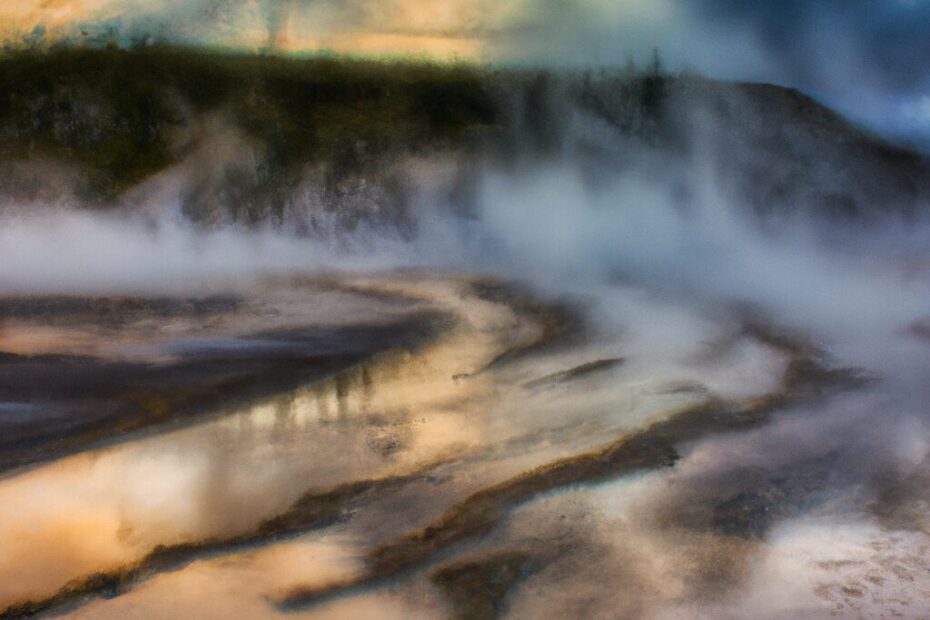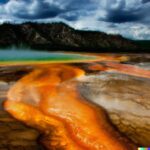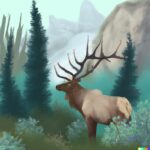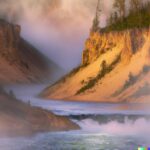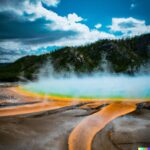Are you a photography enthusiast looking for your next adventure? If so, you may want to consider visiting Yellowstone National Park for some stunning geyser photography.
In this article, we will explore what geysers are, how they are formed, and why Yellowstone National Park is an ideal location for geyser photography.
We will also provide tips for the best times of year and day to capture these natural wonders, as well as the equipment and techniques you’ll need to take breathtaking geyser photos.
We will discuss safety and respectful photography practices in the park, and other activities you can enjoy while visiting Yellowstone for geyser photography.
We will also highlight some other locations around the world that are perfect for geyser photography.
So, grab your camera and get ready for an unforgettable photographic journey!
What Are Geysers?
Geysers, such as those found in Yellowstone National Park, are fascinating natural phenomena characterized by intermittent eruptions of hot water and steam from the Earth’s crust.
The formation of geysers is an intriguing process, often attributed to the presence of underground chambers filled with superheated water. In Yellowstone, the unique attributes of these geysers are highlighted by their colorful mineral-rich terraces, indicating the presence of diverse and specialized microorganisms.
The park’s most famous geyser, Old Faithful, is renowned for its regular and predictable eruptions, showcasing the incredible power of nature. The mesmerizing combination of geothermal activity and striking landscapes in Yellowstone makes it a haven for geyser enthusiasts and nature lovers alike.
How Are Geysers Formed?
The formation of geysers, particularly those in Yellowstone National Park, is a result of complex geological processes involving volcanic activity, thermal features, and underground water reservoirs.
Yellowstone National Park is home to some of the world’s most famous geysers, including the iconic Old Faithful. These natural wonders are formed due to the park’s location near a hotspot in the Earth’s crust, which provides the necessary heat to superheat the underground water. This results in spectacular eruptions that draw in visitors from all over the world.
The thermal features found in Yellowstone, such as hot springs and fumaroles, play a crucial role in the formation of geysers. They contribute to the buildup of pressure and unique mineral deposits, further shaping the geyser formations. Additionally, the intricate network of underground water reservoirs and fissures allows for the circulation and heating of water, creating the geothermal reservoirs that fuel the geyser eruptions.
What Makes Yellowstone National Park a Great Location for Geyser Photography?
Yellowstone National Park stands out as an exceptional location for geyser photography, offering a captivating blend of natural beauty, scenic spots, and diverse thermal features that provide unparalleled photo opportunities for photography enthusiasts and nature lovers.
Yellowstone National Park is home to iconic geysers such as Old Faithful and Grand Geyser, which provide breathtaking eruptions against the backdrop of the park’s stunning landscapes. These eruptions create incredible photo opportunities for visitors to capture the park’s natural wonders.
The park’s intertwining boardwalks offer unique perspectives for photographers, allowing them to capture the colorful hot springs, bubbling mud pots, and vibrant bacterial mats up close. Additionally, the presence of wildlife, including bison and elk, alongside the geothermal features adds to the photographic experience, making Yellowstone an unparalleled destination for geyser photography.
What Are the Best Times of Year to Photograph Geysers in Yellowstone?
Photographing geysers in Yellowstone is particularly rewarding during the spring and early summer months when the vibrant outdoor scenery, favorable weather conditions, and breathtaking scenic views create an enchanting backdrop for capturing the natural wonders of this iconic national park.
During this time, the lush greenery and varied wildflowers further enhance the beauty of the geothermal features, offering a captivating contrast against the steam and unique coloration of the geysers.
The soft natural light during early morning and late afternoon adds a magical touch to the landscape, making it an optimal time for outdoor photography enthusiasts to explore and capture the dynamic geological formations of Yellowstone.
The extended daylight hours provide ample opportunities for photographers to experiment with different angles and compositions while immersing in the remarkable display of nature’s raw power and beauty.
What Are the Best Times of Day to Photograph Geysers in Yellowstone?
The early morning and late afternoon present ideal opportunities for geyser photography in Yellowstone, as the soft, golden light accentuates the natural beauty of the landscape while offering a sense of adventure and exploration for photography enthusiasts and nature lovers.
During these times, the sun’s warm hues cast a ethereal glow over the geysers and steaming pools, creating captivating contrasts and shadows. The mist rising from the hot springs adds an element of mystery and drama to the photographs, enhancing the overall visual impact.
The tranquility of the early morning or the enchanting ambiance of the late afternoon complements the rugged, untamed surroundings of Yellowstone, making it a haven for landscape photographers seeking unique and awe-inspiring shots.
What Are the Best Geyser Photography Spots in Yellowstone?
Yellowstone boasts an array of iconic geyser photography spots, including the renowned Old Faithful, Grand Geyser, and other captivating thermal features that serve as must-see landmarks and attractions for visitors seeking picturesque and unique photo opportunities within the park.
These geysers, with their powerful eruptions and colorful mineral deposits, provide a stunning backdrop for photography enthusiasts. The steam rising from the geysers against the natural beauty of Yellowstone’s landscape creates an ethereal atmosphere, making these spots perfect for capturing unforgettable moments.
Photographers can also explore lesser-known geysers such as Riverside and Castle, each offering its distinct charm and visual appeal. The vibrant and dynamic nature of these geysers continually attracts visitors seeking to capture the raw beauty of these natural wonders through a lens.
What Are the Best Techniques for Capturing Stunning Geyser Photos?
Capturing stunning geyser photos in Yellowstone requires a combination of technical skill, artistic vision, and an understanding of the park’s captivating scenery. This allows photographers to utilize the unique natural elements and scenic backdrops to achieve remarkable and awe-inspiring images.
The dynamic nature of geysers provides an ever-changing canvas for photographers. It offers opportunities to play with light and composition. Understanding the behavior of geysers, such as their eruption frequency and height, is crucial for capturing the perfect moment.
Using a wide-angle lens can help capture the vastness of the geyser basins. Adjusting aperture and shutter speed can also emphasize the sense of movement and power. Incorporating the park’s surrounding landscape into the composition can create visually stunning images that showcase the harmony between the geothermal features and the natural beauty of Yellowstone.
What Equipment Do You Need for Geyser Photography in Yellowstone?
When embarking on geyser photography adventures in Yellowstone, essential equipment such as DSLR cameras, wide-angle lenses, sturdy tripods, and protective gear becomes indispensable for visitors seeking to capture the raw beauty and intricate details of the natural world within the park.
A reliable DSLR camera with a high-resolution sensor and a wide-angle lens is essential to capture the stunning vistas and dynamic thermal features.
Sturdy tripods are crucial for ensuring stability in outdoor conditions to prevent camera shake and blur. Protective gear, including weatherproof clothing and lens filters, are vital for safeguarding equipment from the rugged elements of the geyser basins.
It’s also essential to pack extra batteries, memory cards, and a portable charger to stay powered up amidst the breathtaking landscapes.
What Camera Settings Should You Use for Geyser Photography in Yellowstone?
Achieving optimal geyser photography in Yellowstone necessitates understanding and utilizing specific camera settings, including aperture adjustments, shutter speed considerations, and focal length selections to capture the scenic views and natural wonders with precision and artistry.
This intricate process involves leveraging a wide aperture to emphasize the geyser’s natural beauty and surroundings, allowing for a shallow depth of field that accentuates the details while softly blurring the background.
Adjusting the shutter speed enables capturing the eruption’s dynamic motion, freezing the water droplets in mid-air or creating a captivating sense of movement. When fine-tuning the focal length, photographers can highlight the grandeur of the geyser against the stunning backdrop of Yellowstone, ensuring that every shot encapsulates the awe-inspiring essence of nature’s marvels.
What Lenses Are Best for Geyser Photography in Yellowstone?
Selecting the appropriate lenses, such as wide-angle and telephoto lenses, is crucial for geyser photography in Yellowstone. These lenses enable photographers to seize diverse photo opportunities and intricate details, ensuring comprehensive coverage of the park’s scenic grandeur and natural marvels.
Wide-angle lenses are ideal for capturing expansive landscapes and the mesmerizing expanse of the geysers. They allow photographers to emphasize the immense beauty of the surroundings.
On the other hand, telephoto lenses enable the close-up capture of the geysers’ intricate details and the wildlife that thrives in these unique habitats. This reveals a different dimension of the park’s natural wonders. The combination of these lenses offers photographers the versatility to capture the full spectrum of Yellowstone’s captivating scenery, from sweeping vistas to the mesmerizing details of geothermal features.
What Other Accessories Are Useful for Geyser Photography in Yellowstone?
In addition to cameras and lenses, accessories such as polarizing filters, lens hoods, and protective cases prove essential for geyser photography in Yellowstone. These accessories facilitate the seamless integration of photography with the adventurous spirit of outdoor exploration and the raw beauty of the natural world.
A polarizing filter reduces glare, a lens hood shields against stray light, and protective cases safeguard equipment in unpredictable weather. These accessories enhance the photographer’s ability to immerse in the landscape, enriching the experience of documenting the awe-inspiring geothermal features and fostering a deeper connection with nature’s wonders.
What Are Some Tips for Safety and Respectful Photography in Yellowstone National Park?
When engaging in geyser photography in Yellowstone, prioritizing safety measures, respecting natural habitats, and adhering to park guidelines is imperative to ensure a harmonious coexistence with the captivating wilderness and protect the natural beauty that draws visitors to this iconic national park.
When exploring Yellowstone, it’s important to stick to designated boardwalks and trails. This not only protects fragile ecosystems, but also ensures your own safety. Additionally, be mindful of wildlife and their habitats, keeping a respectful distance to avoid disturbance.
Another crucial aspect to consider is the weather. Conditions in Yellowstone can change rapidly, so it’s important to be prepared with appropriate clothing and supplies. By following these essential guidelines, visitors can fully enjoy the wonders of Yellowstone while also preserving its unique environment for future generations.
What Other Activities Can You Do While Visiting Yellowstone National Park for Geyser Photography?
Beyond geyser photography, visitors to Yellowstone National Park can partake in a range of outdoor adventures, including wildlife watching, hiking scenic trails, and exploring iconic landmarks. This provides a multifaceted experience that captivates tourists and photography enthusiasts alike.
The park’s diverse landscape offers opportunities for activities such as biking along pristine pathways, fishing in crystal-clear waters, and camping amidst breathtaking natural beauty. These activities allow visitors to fully immerse themselves in the beauty of the park and create unforgettable memories.
With its abundance of geothermal features, visitors are also drawn to the colorful hot springs and bubbling mud pots. This creates an unforgettable sensory experience in the heart of this iconic national park, making it a must-visit destination for nature lovers and adventure seekers.
What Are Some Other Locations Around the World for Geyser Photography?
In addition to Yellowstone, several other global locations offer remarkable opportunities for geyser photography. These destinations captivate visitors with their awe-inspiring geothermal activity. From Geysir’s mighty eruptions amidst Iceland’s stunning landscapes to Rotorua’s serene geothermal pools nestled in the heart of New Zealand’s North Island.
In Chile, the El Tatio geysers create a surreal spectacle at sunrise, set against a backdrop of untamed beauty. These alluring locales continue to draw travelers seeking to capture the earth’s natural marvels through their lenses, making them prime spots for geyser photography and adventures in picturesque landscapes.
Frequently Asked Questions
What are some iconic locations in Yellowstone for geyser photography?
Some popular spots for photographing geysers in Yellowstone include Old Faithful, Grand Prismatic Spring, Morning Glory Pool, and Biscuit Basin.
Are there any specific photography tips for capturing Yellowstone’s geysers?
Yes, it’s important to use a tripod to steady your camera and a polarizing filter to reduce glare from the water. It’s also helpful to shoot during sunrise or sunset for softer lighting.
Can I get close to the geysers for better photos?
No, for your safety and to preserve the delicate environment, the National Park Service requires visitors to stay on designated boardwalks and trails when viewing geysers.
Are there any lesser-known geyser locations in Yellowstone that are great for photography?
Yes, some hidden gems for geyser photography include Black Sand Basin, Norris Geyser Basin, and West Thumb Geyser Basin.
Is it possible to capture photos of geysers in Yellowstone during the winter?
Yes, some geysers are active year-round and can be especially stunning when surrounded by snow and ice. However, it’s important to take extra precautions when photographing in cold weather conditions.
Are there any photography restrictions for geyser locations in Yellowstone?
Yes, drones are not allowed to be flown in the park and flash photography is prohibited in some areas. It’s important to always follow park regulations and respect the natural environment.
Last Updated on January 25, 2024 by Jon Waraas – Originally Posted: January 25, 2024

I’m Jon Waraas, and I’ve been navigating the online world since 2006. By day, I’m the proud owner of some eCommerce gems, and by night, I’m the voice behind the adventures on Waraas.Com.
My heart, however, belongs to the wild beauty of Yellowstone National Park. I’ve got a collection of websites dedicated to sharing the wonders of this natural masterpiece. Oh, and did I mention? I’m currently building my own cabin inside the ghost town of Gilmore, Idaho – a cabin with tales to tell!
When I’m not immersed in the digital realm, you’ll find me lacing up my boots for a good hike or setting up camp under the star-studded sky.
